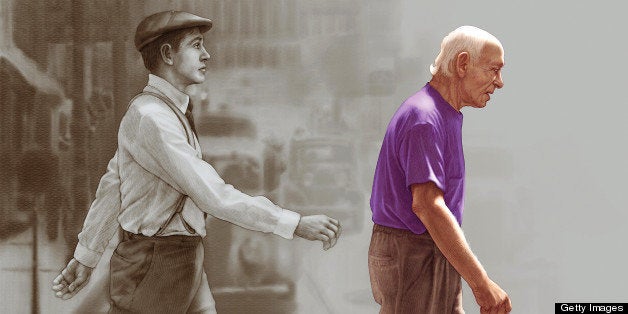
Who will care for you when you get old? If that's a scary or uncomfortable question, you are in good company. Most people don't want to think about their long-term care needs and when they do, they tend to have major misperceptions of what it costs and what the government will pay for.
This high degree of denial or optimism -- take your pick -- was reaffirmed last month in a survey released last month by the Associated Press and the NORC Center for Public Affairs Research. One particularly striking finding: almost 70 percent of Americans believe they will be able to rely on their family to meet their long-term care needs. Yet the Baby Boomers, that large postwar generation now crossing the threshold of 65 at the rate of 10,000 per day, are the least likely generation in history to be married or have children. Over one-third of Boomers have never married, a jump of 50 percent from the previous generation. Between 20-25 percent are childless. How realistic is it to expect that every Boomer's family will be able to provide what is needed? In this context, who is "family"?
Family caregiving remains the bedrock of our long-term care system, partly because families' love and support their older members, but also because no one else will do it. The government provides very little support for long-term needs, and even that is diminishing. For the record, Medicare does not cover long-term care and Medicaid imposes strict income and asset limits before it will cover nursing home and other long-term care. And caring for an older person is not just making decisions at the end of life or whether to go into a nursing home, but also providing the security that there is someone to call who can provide both emotional support and on the ground support whenever needs arise.
In some ways, the lesbian, gay, bisexual and transgender (LGBT) community faced this issue sooner than the rest of the population. In an environment where biological families were often hostile, relationships were not legally recognized and child rearing was not the norm, LGBT people came to rely on their "family of choice" rather than a "family of origin." Fortunately, most LGBT folks no longer have to choose between one and the other, but the system of relying on friends and neighbors much more systematically and broadly offers an important lesson for Boomers in general.
Another factor: We all rejoice in the "longevity bonus" of much longer life that most of us will receive, but it also brings its own challenges. My grandmother lived to be 100. If my mother lives to be the same age (and, at age 82, she shows no signs of doing otherwise), I will be the 81-year-old "child" taking care of her. Even for Boomers who are married, inevitably one spouse will die before the other, leaving the remaining spouse (usually the woman) to address these challenges alone. Indeed, some commentators feel that growing older alone is one of the most important -- and ignored -- women's issues of the next 30 years.
The challenges are real, but so is the determination of Boomers to make this work, and their ingenuity and willingness to improvise can be effective. For example, individuals are coming together informally to develop networks of friends who have responsibilities when a member of the group needs help. Some older people are living together (like the "Golden Girls") informally or co-locating to a neighborhood where they can help each other when needed, at least in places where zoning and other ordinances do not make this type of living arrangement difficult or impossible.
Where are other successful support models to be found? The fastest growing network to help older people find services is the Village to Village network. Villages are based on the model of neighbors helping neighbors, but provide a structure and consistency for the work. They are membership-based, created and governed by older adults, and offer their members a network of services that support "aging in community," such as transportation and home repairs delivered by both paid providers and volunteers; social, cultural and educational programs; health and wellness activities; and member-to-member volunteer support. In fact, remaining active and engaged by volunteering is a popular aspect of membership and 51 percent of members volunteer within their Village. While most Villages require individual members to pay a fee to join (generally around $500), about two-thirds of Villages offer discounts or subsidies to low-income seniors. In California, grants from the SCAN Foundation and the Archstone Foundation have helped both support individual Villages and document what makes them work and how they can be sustained and expanded.
The Village to Village network is part of a growing movement to create age-friendly communities where people can grow up as children and also grow old in place. Instead of segregating older people into special facilities or communities, it tries to find ways make places better for both the old and the young and to link the groups together. Grantmakers In Aging offers great resources that can help. These include a database that can be searched by state so you can see what's already going on in or near your community, or find workable solutions to adapt to your community's needs.
Today's generation of older adults looks forward to the longest life span of any group in human history. If that reality, and the related possibility of growing old alone, gives you pause, join us in supporting a more age-friendly future, with a greater range of choices for all people to find the support they will someday need. The challenges of living longer and living alone can be formidable, but there are lots of creative solutions already helping people across America. What ideas can you add? It's time to pull together and put all our ideas to work.
Earlier on Huff/Post50:

